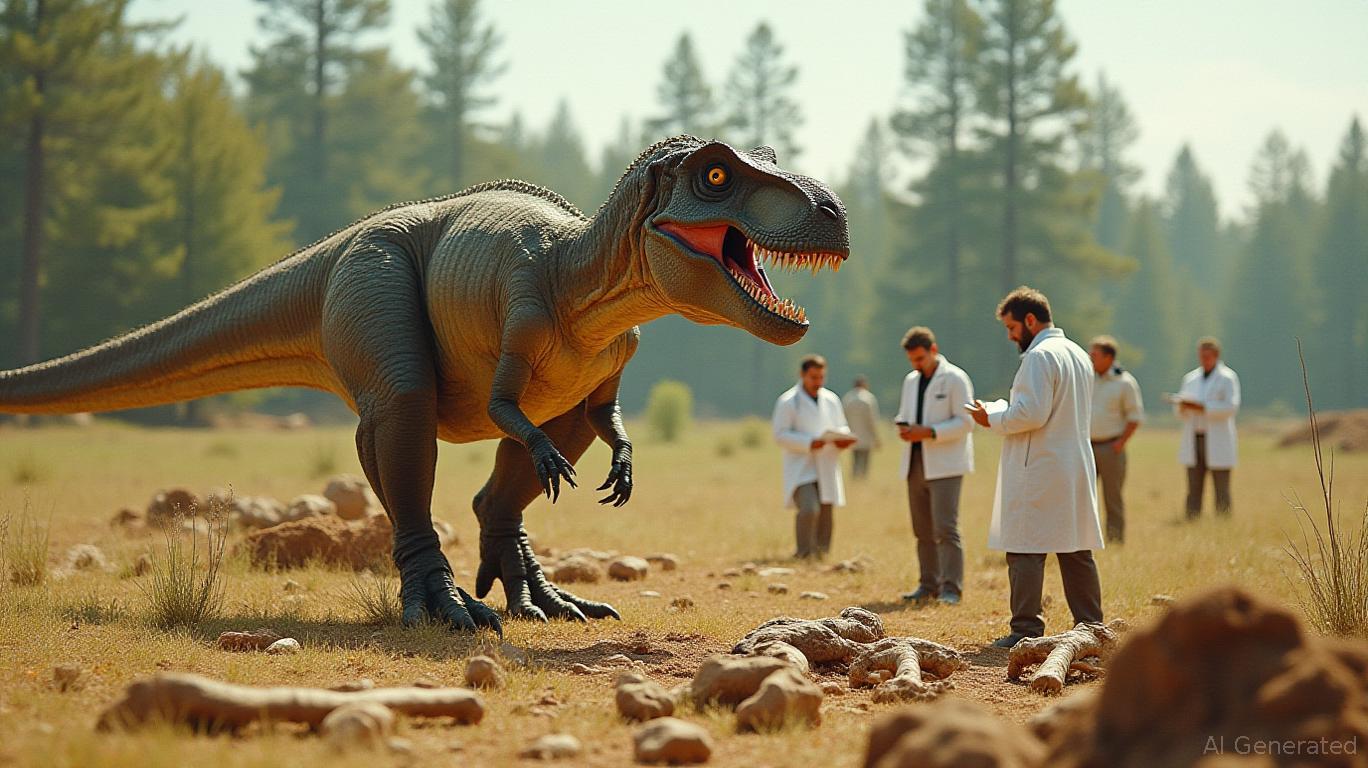Nanotyrannus Verified as a Separate Species, Transforming Our Understanding of Cretaceous Predator Relationships
- A 2025 study in Nature confirms Nanotyrannus as a distinct tyrannosaur genus, not a juvenile T. rex, resolving a decades-old debate. - Bone analysis of the "Dueling Dinosaurs" fossil revealed skeletal maturity and unique traits like higher tooth count and skull structure. - Researchers reclassified "Jane" as Nanotyrannus lethaeus, suggesting coexistence with T. rex in different ecological niches during the Late Cretaceous. - The findings challenge T. rex's perceived dominance and hint at greater tyrannos
For many years, scientists have argued over whether Nanotyrannus—a small tyrannosaurid first found in the 1940s—was simply a young Tyrannosaurus rex or represented its own species. A major study published in Nature on October 30, 2025, has finally settled the debate, establishing Nanotyrannus as a separate genus and reshaping our understanding of predator relationships in the Late Cretaceous, according to a report from Scientific American

The research, led by Lindsay Zanno from North Carolina State University and James Napoli of Stony Brook University, focused on the "Dueling Dinosaurs" fossil—a 67-million-year-old find from Montana’s Hell Creek Formation. This exceptionally well-preserved fossil features a Triceratops and a Nanotyrannus lancensis locked in battle. By studying the bone growth rings, the team discovered that the Nanotyrannus was a fully grown adult at 20 years old, measuring only half the length and a tenth of the weight of a T. rex. “There’s no way this animal could have developed into a T. rex,” Zanno explained, highlighting that its mature skeleton and unique features—such as more teeth and different cranial nerve structures—disprove the idea that it was just a juvenile, as detailed in Scientific American.
Additional examination of more than 200 tyrannosaur fossils showed that Nanotyrannus had longer arms, a small third finger, and a skull shape unlike that of T. rex. These characteristics, which appeared early in its life, could not have changed with age, Napoli told the New York Times
The scientists also reassigned the “Jane” specimen—a nearly complete skeleton once thought to be a young T. rex—to Nanotyrannus lethaeus, identifying it as a second species in the genus, according to Ars TechnicaThese discoveries challenge the long-standing belief that T. rex was the only major predator in its ecosystem during the Late Cretaceous. Instead, evidence suggests that Nanotyrannus lived alongside T. rex, filling a different role as a quicker, more nimble hunter that preyed on smaller animals, as reported by AP News
“This completely changes decades of thinking about T. rex growth and behavior,” Zanno remarked, adding that the Hell Creek Formation may have supported a “layered community of predators,” as Scientific American described.Although the study has been praised as a “decisive blow” to the idea that Nanotyrannus was a juvenile T. rex by experts like Thomas Holtz from the University of Maryland, some remain unconvinced. Thomas Carr of Carthage College, a longtime supporter of the “teen rex” theory, raised doubts about the lack of juvenile T. rex fossils and questioned the reclassification of “Jane” as a new species in the AP News article. Nevertheless, this research represents a major shift in paleontology, indicating that tyrannosaur diversity was much greater than previously thought, as discussed in Ars Technica.
Recognizing Nanotyrannus as its own genus paves the way for new research into dinosaur evolution and how different species lived together. As Zanno pointed out, “Now that we’ve set the record straight on Nanotyrannus, we believe other small tyrannosaur fossils may have been misidentified, and there could be many more species yet to be discovered,” Scientific American concluded.
Disclaimer: The content of this article solely reflects the author's opinion and does not represent the platform in any capacity. This article is not intended to serve as a reference for making investment decisions.
You may also like
Bullish Experts Face Off Against Legal Challenges Amid DoorDash’s Growth
- Analysts upgrade DoorDash (DASH) with $272–$340 price targets, citing market leadership and strategic innovations like Wolt acquisition and drone delivery. - Short-seller claims about ITIN worker onboarding and profit model fragility spark regulatory risks, while a lawsuit alleges illicit THC deliveries. - DoorDash counters with CSR initiatives (e.g., free meals for SNAP recipients) and expanded partnerships with Kroger/Uber Eats to strengthen public perception. - Market uncertainty persists amid Fed rat

CryptoQuant reports peak in BTC spot trading volume in October

BlackRock, Fidelity, and ARK 21Shares clients sell $396 million worth of Bitcoin

Satoshi Nakamoto's holdings fall by $4.9B over the past 24 hours, now at $118B
